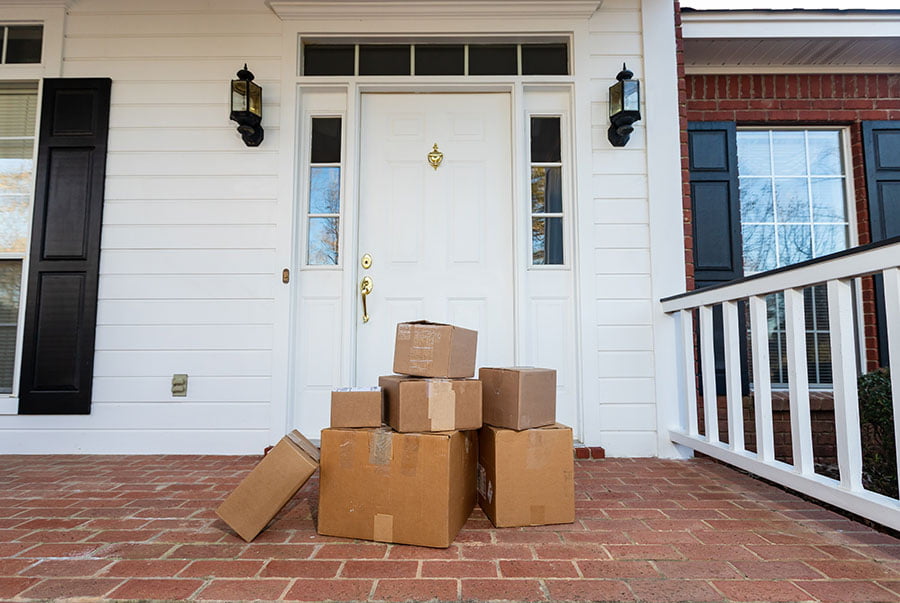Published June 15, 2020
As a result of my article, “Earthquakes, Tsunamis and Supply Chains: A 2020 Update,” I have been asked to provide more detail on the Digital Commerce, the China trade war and COVID-19 earthquakes and resulting tsunamis. This blog will cover the digital commerce earthquake and tsunamis. Subsequent posts will cover the China trade war and COVID-19 earthquakes and tsunamis.
When did the digital commerce earthquake begin? This is a hard question to answer. Clearly sometime between the 1960s when EDI was invented and 1999 when e-commerce accounted for more than a half of a percent of all retail. Some would be more precise and say digital commerce began on July 5, 1994, when Amazon was created. No matter what date you select, it is clear the digital commerce earthquake took place at least 20 years ago. However, of more significance for this article is on what date did digital commerce have a major impact on the retail supply chains. I would pick the date for the earthquake that beget the digital commerce supply chain tsunamis as September 19, 2006-the date Fulfillment by Amazon (FBA) was created. Up until this date, the e-commerce supply chain looked the same as a catalog supply chain. But beginning with FBA, there was a revolution to offer free, fast shipping.
The first tsunami wave to hit the shore because of the September 19, 2006 FBA earthquake was an immediate awareness that charging customers’ “shipping & handling charges” on digital orders was a non-starter. Charging shipping & handling fees became the most frequent reason for abandoning the shopping cart. Starting in 2007, many retailers rationalized that the shipping costs for digital orders to consumers was less than the cost of the stores and so they jumped on the “free shipping” bandwagon. At the same time, there are still some retailers in 2020 who charge customers shipping fees. Of greater impact than free shipping on the retail supply chain was and continues to be fast shipping. At FBA, for many years, fast was defined as two days. Two-day shipping demanded multiple fulfillment centers (FCs) filling digital orders and presented a major problem for the traditional retailer. Originally, there were no FCs, only distribution centers (DCs) that filled store orders not customer orders. Since digital orders were a small percentage of all sales, the order fulfillment was done out of the DCs. The DCs were located based upon the costs associated with operating the DC and transportation costs to stores and not based on quick delivery to customers. This resulted in DCs being in remote areas, not close to customers. This was the second tsunami wave that hit the shore with respect to FBA: FCs incorrectly located for fast shipping inside of the DCs that were not located close to the customers. As online orders grew, the DCs became ineffective in handling fulfillment and FCs were outsourced to 3PLs and the age of multichannel supply chains came to be. Multichannel resulted in traditional retailers having two separate channels where things were run separately. This was the third wave in the FBA wave train to come ashore: ineffective and inefficient 3PL-operated FCs that got products to customers in two days, but that cost a fortune and beget many inventory and brand identity problems. In fact, the inventory challenges beget the demise of multichannel retail and the term multichannel was replaced by omnichannel. Omnichannel became the fourth FBA tsunami wave that came ashore as retailers combined store and online inventories into new DCs/FCs that could, with three or four DCs/FCs, deliver in two days to all customers in the country (or at least to all customers who did not have bears in their backyards). Omnichannel solved the inventory challenge but it most often resulted in two different retail channels from a client-facing perspective. This beget the fifth tsunami in the FBA wave train: the evolution of omnichannel into a unified channel (unichannel) supply chain, where the brick vs. click conflict turned into bricks and clicks as a unified whole. This, accompanied by the huge growth in digital commerce, resulted in Amazon disrupting themselves when they changed the game from two-day shipping to quicker delivery of next- and same-day delivery in certain locations. This sixth wave of the FBA tsunami wave train is having a huge impact on the retail supply chains and along with continuing growth of online shopping and “buy online pick up in store” (BOPIS) has created the need for distributed logistics. Distributed logistics is a network of DCs and FCs that feed local micro-fulfillment centers (MFCs) that are in-market and able to do quick and inexpensive fulfillment of customer orders. This tsunami has washed ashore but has yet to draw back yet. The FBA earthquake created this sixth tsunami, but the water is still flooding the supply chain network and the drawback has yet to occur. As this wave and the beyond belief impacts on the supply chains networks are being dealt with, I see a seventh wave that will be coming to shore for the holiday 2020 season. This seventh tsunami wave will come as retailers grasp that it will not be adequate to just sell in their own stores and on their own websites. Retailers must sell everywhere their customers shop. Retailers must sell in their own stores and on their own websites, but they must also sell on other marketplaces and websites. This seventh wave is going to bring to the retail supply chain information technology systems a challenge of being able to efficiently and effectively source anywhere, sell anywhere and fulfill anywhere.
The 2006 FBA earthquake has so far resulted in the following wave train tsunamis:
Wave 1: Free shipping
Wave 2: Fast shipping
Wave 3: Multichannel
Wave 4: Omnichannel
Wave 5: Unichannel
Wave 6: Distributed logistics
Wave 7: Sell anywhere
Stay tuned, wave 8 will arrive in 2021.



